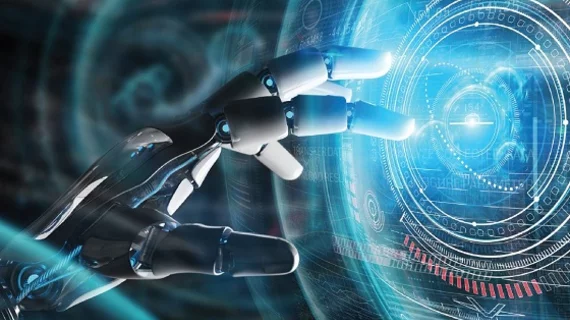How AI Will Impact the Healthcare Workforce
In the not-too-distant future, hospitals will operate very differently than they do today thanks to the artificial intelligence (AI) boom, according to a new Market Insights report by the American Hospital Association’s (AHA) Center for Health Innovation.
For many members of the healthcare workforce, the most tangible changes will manifest in how their work is completed, with AI, machine learning and robotic process automation (RPA) all having an impact. The AHA cites research concluding that 40 percent of the tasks currently performed by non-clinical staff and 33 percent of clinicians’ jobs could be done by AI. In the future, some tasks will be outsourced to technology, and healthcare workers will see their roles change.
Make way for automation …
The AHA expects that RPA will have the biggest impact on most healthcare jobs because of its potential to add capacity, cut staffing costs and reduce human error by automating manual, repetitive and rules-based tasks. Such tasks will include billing, claims submission, patient enrollment, insurance verification, patient scheduling, inventory management and contract management.
For many, RPA will be a welcome entrant into their workflow, freeing them to spend more time assisting and caring for patients or tackling other duties that technology can’t perform. For workers who specialize in tasks like these, however, RPA also could result in job loss and the need to shift to other work.
… And a data influx
Clinicians may find the benefits of AI extending beyond automating tasks and toward incorporating more data into their decision-making. Machine-learning models with clinical decision support capabilities already are being woven into healthcare workflows, with predictive tasks improving diagnoses and disease classification.
“In the future, AI will make sense of the overwhelming amount of data created from genomics, biosensors, smartphone apps, the electronic health record, unstructured notes and data on social determinants of health, and create a broader context for clinicians to deliver high-quality, patient-centered care,” the AHA report reads.
However, for machine learning to be useful to clinicians, the data will need to be accurate—a requirement that could result in healthcare workers taking on new tasks related to ensuring data integrity. They may need to learn new digital skills, such as digital and AI acumen, data appreciation and agility.
“With AI as their new co-worker, staff will need to acquire new skill sets and competencies to take advantage of AI capabilities, and the educational pipeline needs to equip those entering the health care workforce with new skills,” the AHA says.
As new jobs emerge …
One result of having these new technologies in the healthcare workplace will be the premium placed on positions that facilitate the technology. Among them: data scientists, AI engineers, data governance experts, data entry experts, data engineers and chief AI officers.
… Patient-centric priorities will endure
To its hospital and health system constituents who are considering how to prepare for such changes, the AHA urges a continued prioritization of people skills and the patient relationship. Those aspects of healthcare aren’t likely to change, the organization predicts.
“The workforce of the future not only will need people with technical skills, but also soft skills like communication and empathy to take full advantage of what AI gives them to do their jobs,” the AHA says.

